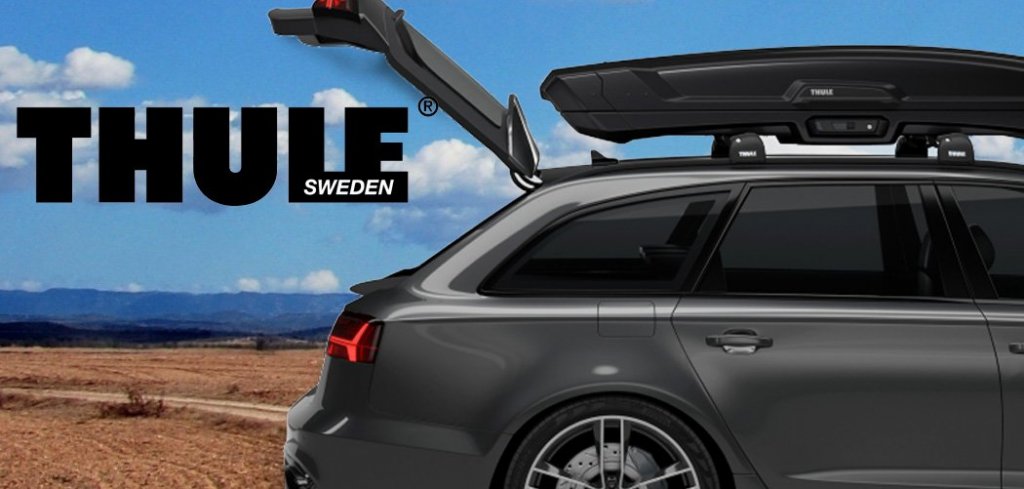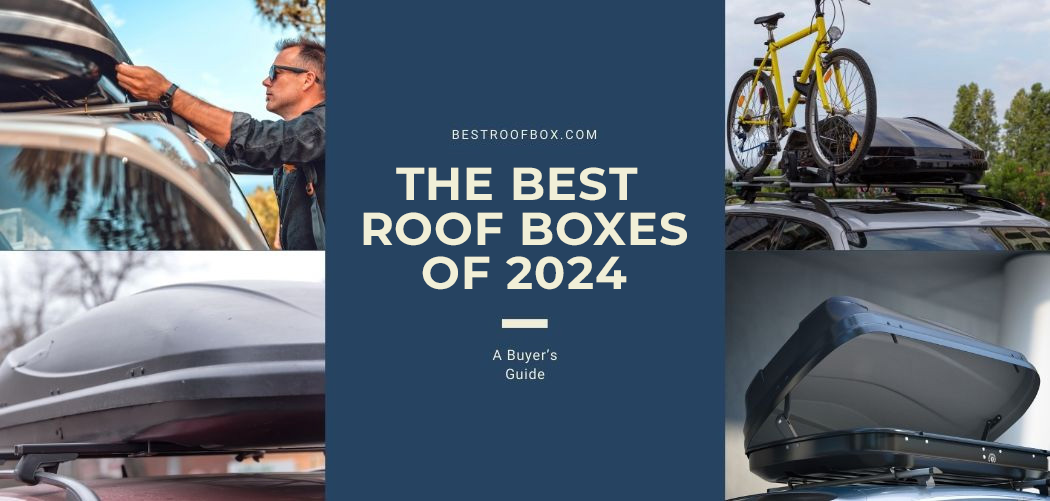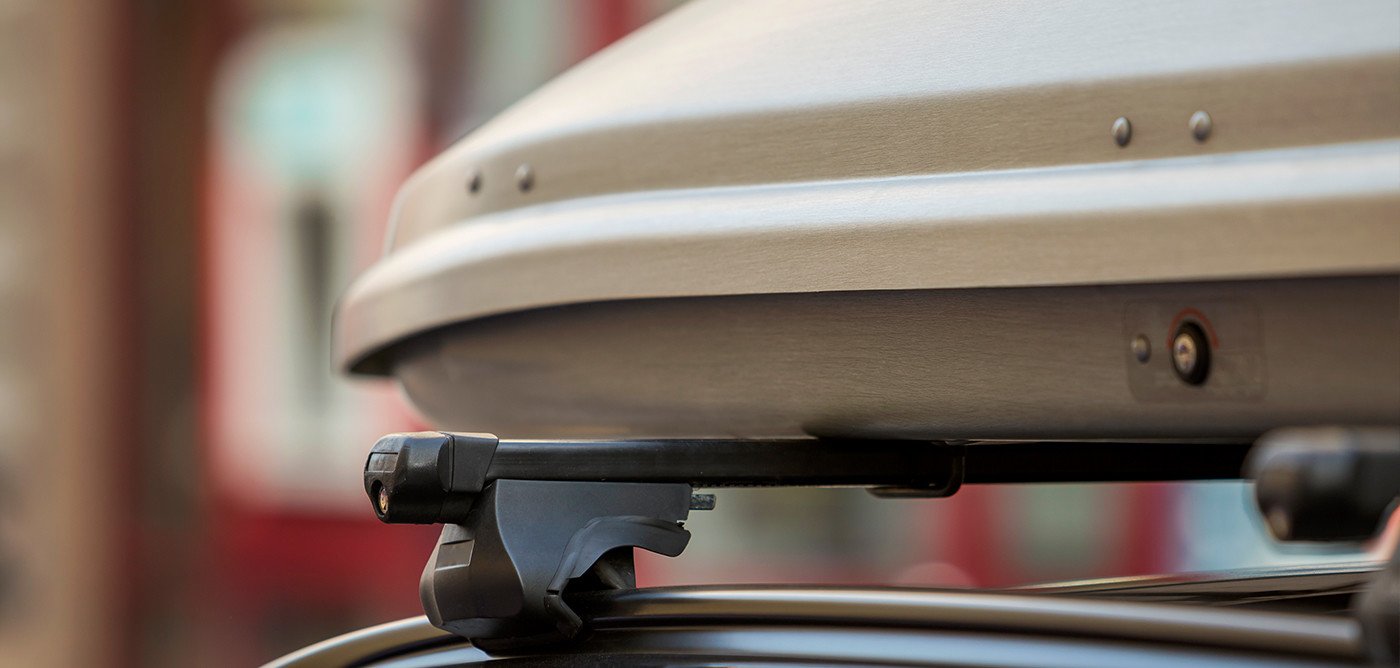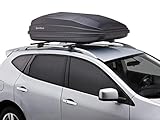Maneuvering enough space in the car for your bags and gear without sacrificing comfort and safety is the road-tripper’s Rubik’s cube. If you have come to dread packing the car, it might be time to consider expanding your vehicle’s storage capacity with a roof box, and when it comes to roof boxes, Thule is a name you might have already heard of.
By investing in a Thule Roof Box you know you’ve got a quality cargo carrier for your car.
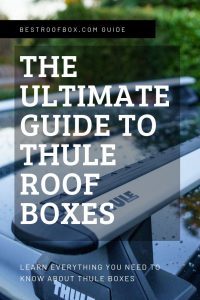
Regularly voted “best-in-test”, Thule has long been one of the market leaders in rooftop cargo boxes and car storage solutions. And with their safety record, wide range of roof box sizes and use of durable, high quality materials it isn’t hard to see why.
This guide to Thule’s car roof boxes will give you the information you need to decide whether a Thule car roof box will work for you.
Table of Contents
Our Favorite Thule Products
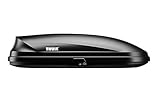





Last update on 2025-11-12 / Affiliate links / Images from Amazon Product Advertising API
What is a Thule Box?
Car roof boxes have been around for quite a while now and it is an ever-growing market, which makes it more and more difficult to know what to buy and how to get value for money. Thule was founded in Sweden in 1942 and has been building their reputation for safe, stylish and easy to use roof racks and cargo boxes ever since.
Thule roof boxes are durable, hard-shelled cargo boxes that attach to your car roof. These versatile products are designed to solve a vast range of storage needs while making road-tripping more comfortable and convenient for you and your passengers. From camp stoves to snowboards, deck chairs to fly rods, there is a Thule storage box for nearly every type of luggage or outdoor gear.
The invention of rooftop storage has been a revelation for road travelers, and for good reason. Their versatility, on many fronts, is impressive. You can get a roof box in so many shapes, sizes, colors and designs. But Thule does it particularly well. Thule roof box construction is fairly consistent across models but can vary slightly depending on your desired strength, rigidity, and finish. Most Thule roof boxes provide dual-side access making loading and unloading super convenient.
How Much Can a Thule Roof Box Hold?
Thule’s range of roof boxes are designed to accommodate almost any outdoor equipment you need; long and thin for skis and fishing rods to big and bulky for all your camping and outdoor gear. Campers, climbers, skiers and surfers will all find box sizes and shapes to hold their equipment, outdoor gear or luggage. The amount of gear your storage box holds will depend on both the shape and size of the box, i.e. the larger your vehicle, the larger the box it can hold. Your Prius may not be able to accommodate one of the extra-large-capacity boxes, but your Suburban will have no problem.
So how much can a Thule roof box actually hold? Well, the capacity range for Thule rooftop storage starts with 10-12 cubic feet boxes that generally accommodate gear for one or two people. On the upper range are the 20-plus cubic feet boxes that can accommodate five people, or more, depending on the type of luggage or gear.
The most popular storage boxes fall in the 15-18-foot range, and will generally accommodate a family of four. Longer versions work great for skis and fishing poles, and shorter boxes are usually adequate for most camping gear and luggage. You can even use a box to transport things like tools around, however you may struggle to get large items like Wheelbarrows in a roof box.
An average-sized roof storage box has about the same capacity as the trunk of a Honda Accord. You can double your storage space as well as the length of items you can carry. Even a trip to the DIY store can be a breeze with plenty of room in your roof box for bulky lumber, supplies and tools.
If length is most important to you, the Thule Force XT XXL, at 92.5 inches, is the longest Thule roof box. Your 215-centimeter Nordic skis will do fine in this box, and it can carry up to seven pairs. Like the Motion XT, the extra-large Force XT can support 165 pounds and is quite spacious with 22 cubic feet of capacity.
Despite its length, the design allows for easy access to the rear compartments of most standard vehicles. This long Thule box is 35.5 inches wide and 18 inches tall.

What Is the Largest Thule Roof Box?
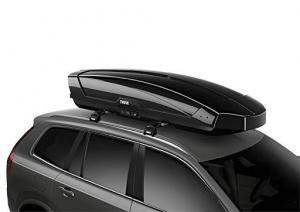
Two Thule models fit the description of the largest box available. Depending on whether you are looking for length, width or capacity, these two large-capacity boxes will accommodate even the longest and bulkiest equipment.
The Thule box with the highest weight rating is the Thule Motion XT XXL. It will hold up 165 pounds of gear and has a capacity of 22 cubic feet. This choice also boasts the most accommodating width of any Thule box, at 37.5 inches.
The Motion XT XXL is 91.5 inches long and 18 inches tall. At 55 pounds, it is lighter than many larger-sized boxes. The Motion XT is uniquely designed for large capacity and aerodynamics and will fit a wide range of vehicles. Despite its size, it is reported by users to be quiet on the road.
As for convenience, the Motion XT XXL allows for easy car-trunk access and plenty of clearance with most average to large-sized vehicles. You wouldn’t want to pay for extra storage and then lose access to the rear of your vehicle. The dual-side openings are equipped with lid-lifters and grip-friendly handles to allow for quick and easy access.
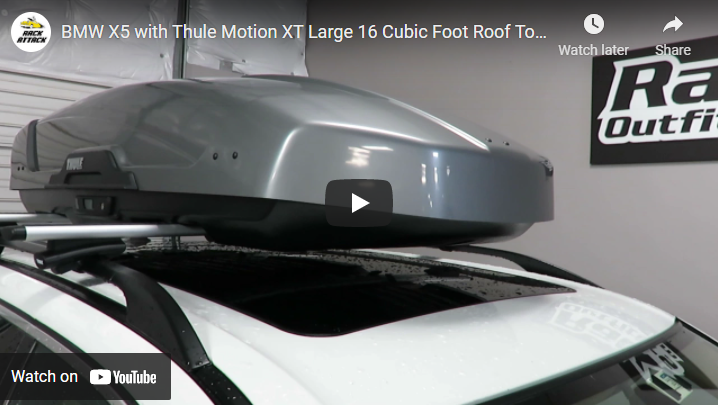
How Are Thule Cargo Boxes Made?
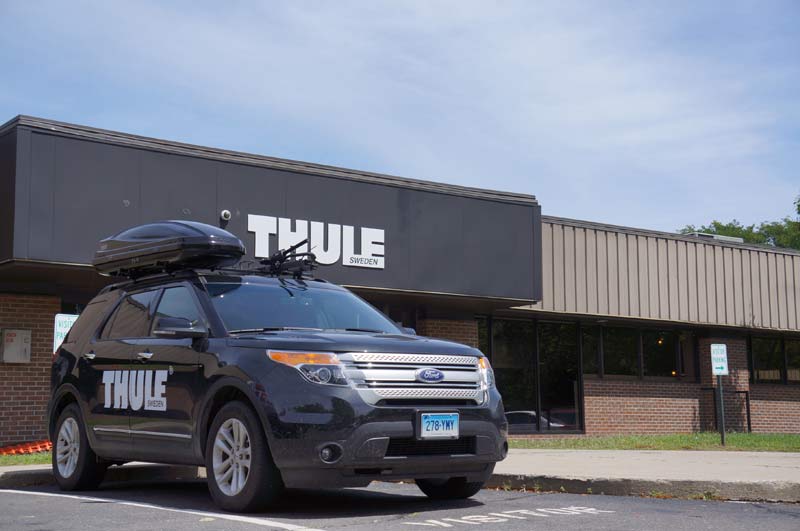 Thule roof storage boxes are known for their safety, strength and durability. The box itself is constructed from five layers of super-strong, automotive-grade acrylic, often used for molding applications because of its light weight and impact resistance. If environmental factors are included in your storage box wish list, you will be pleased to know Thule incorporates up to 80% recycled materials into many of their products.
Thule roof storage boxes are known for their safety, strength and durability. The box itself is constructed from five layers of super-strong, automotive-grade acrylic, often used for molding applications because of its light weight and impact resistance. If environmental factors are included in your storage box wish list, you will be pleased to know Thule incorporates up to 80% recycled materials into many of their products.
A large sheet of the plastic is heated and vacuum molded to the desired shape. Thule molds are designed to provide additional strength and stability by incorporating grooves and other indentations. Most boxes are fitted with embedded support bars in the base of the box for added rigidity and weight-carrying capacity. Dual-function struts ensure that the box firmly closes and easily opens without having to be held or propped. You will also have plenty of choices that affect the appearance and functionality of your roof storage box.
When in use, car roof boxes have almost constant exposure to the elements, including the sun. The shell material is treated for ultraviolet protection to prevent fading and other sun damage. Glossy or matte finishes are available in black, gray or white, depending on the model. Thule makes several types of surface textures. For example, the Sonic Alpine box features a dimpled top, similar to the surface of a golf ball, designed for improved aerodynamics. The AeroSkin diamond texture finish sported by the Thule Force line aids in the aerodynamics and also directs water off of the box.
Most Thule boxes have multiple lock-down points along the sides of the unit. These mechanisms are uniquely designed to serve as both locks and hinges, to facilitate Thule’s dual-side opening feature.
 The materials used in Thule storage boxes endure extensive testing through a range of parameters. Visiting the product testing area of Thule’s website is an adventure. Thule goes to great lengths to ensure their materials will endure every possible type of extreme weather.
The materials used in Thule storage boxes endure extensive testing through a range of parameters. Visiting the product testing area of Thule’s website is an adventure. Thule goes to great lengths to ensure their materials will endure every possible type of extreme weather.
The boxes must tolerate wear-and-tear simulations including drop, shock and crash testing to confirm the durability and tensile strength of the materials. Before a Thule box design is approved, it virtually travels the globe, through the harshest arctic cold, pelting rain, desert heat and high winds.
Are Thule Cargo Boxes Waterproof?
Because roof storage boxes are exposed to the elements most of the time, you will want to feel confident that your belongings will be dry and clean when you reach your destination. Thule boxes, like most hard-shelled rooftop storage boxes, are weather-resistant but not waterproof. But that’s just a technicality…
For a product to be technically waterproof, it would need to keep the interior completely dry, even when submerged in water. Thule storage boxes are designed to keep moisture from rain or snow out of the box. The shell materials are impervious to water, and the openings are equipped with seals that keep damp and wet weather out. Thule’s hard shell and curved aerodynamics also contribute to weatherproofing by quickly directing moisture off of the box.
If extreme weather is expected during your road trip, you don’t need to let it concern you too much. As long as the box is not overfilled and is closed and latched properly, your gear will stay dry.
How Do You Install a Thule Roof Box?
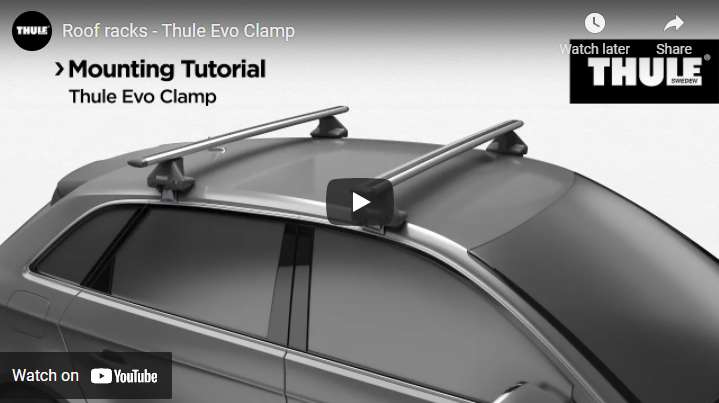
There may be times when you don’t need your Thule box on your car, so it’s important that installing and removing the box be as simple as possible. Thule has designed their attachment systems with convenience and safety in mind.
Roof storage boxes require your vehicle to be equipped with a roof rack to support the weight of the box. Many vehicles come with a factory-installed roof rack or roof bars, but some don’t. Aftermarket roof bars are plentiful, and you won’t have trouble finding one to fit your vehicle.
Fortunately, Thule storage boxes are designed to fit most standard roof racks. To be safe, it’s recommended you confirm your roof rack is compatible with your desired Thule box. If you plan to use a larger capacity roof cargo box, you will want to choose a roof rack that is rated for that weight range. Thule and other vendors make a variety of roof racks and provide easy, online methods for choosing the right rack for your vehicle.
With the proper roof rack installed, you are ready to place your Thule roof box on the roof. For boxes equipped with Thule’s signature AcuTight bolts, make sure the knobs inside the box are turned to fully open the clamps that extend below the box. This will make positioning much easier. For most box sizes, you will need a second person to help lift the box onto the roof. With the box resting on the roof rack cross bars, you will want to evaluate several factors before attaching the box to your rack.
The goal is to position the box so that it is far enough forward to clear any roof antennas and allow full opening of the back compartment of your vehicle. The box should not extend forward beyond the top of your windshield. It is not necessarily unsafe to use a Thule box that interferes with the opening of your rear vehicle hatch, but it is less convenient and could result in damage to the car or the box. The side-to-side position of the box will be determined by whether you are carrying a second item, such as a mountain bike, on the rack. In the absence of a second item, position the rack in the center.
Once in place, one person can attach a Thule box to the roof rack. For security purposes, the bolts that lock your box to your roof rack are tightened from the interior of the box. You will likely need to open a door to your vehicle and stand on the step-in plate in order to access the interior fastening mechanism. Some Thule models feature sturdy U-bolts that wrap around the roof rack bars and extend into the interior of the box. Reinforcement plates inside the box make for a sturdy connection between the box and the roof rack.
Other Thule boxes are equipped with a convenient sliding roof mount system, which facilitates the positioning of claw-like clamps along the roof rack. A large diameter, easy-grip tightening knob inside the box controls the sturdy clamps that extend below the box and grab the roof rack bars. Tightening the bolt closes the clamps, securing the box to the rack.
Thule’s AcuTight mounting system is designed to provide you with both tactile and auditory feedback, in the form of a click, when the box is securely clamped in place. This prevents over or under-tightening, much like the mechanism on a gas cap.
The Thule dual-side opening feature facilitates installation by making the mounting bolts accessible from either side. Once each of the bolts has given you that signature click, you are ready to load up your storage box.

How Do You Remove a Thule Roof Box?
Thule, being known for its convenience-minded designs, has made sure removing a roof storage box is quick and easy. For boxes fitted with the AcuTight clamping mechanism, it’s a matter of accessing the interior of the unit and loosening each knob until the clamps that fasten to the roof rack are completely open.
For systems with U-bolts and plates, you would loosen the easy-grip knobs and remove the bolts. Once the fastening mechanisms are disengaged, you can lift the box off of the roof rack and place it on a stable surface.
It is recommended, unless your roof box is a very small version, you have another person help you gently lower the box off of the roof. It may be tempting to do it yourself, but despite all of that crash testing, you don’t want to risk losing hold of the box and letting it fall to the ground.
How Do You Unlock a Thule Roof Box?
Thule’s innovation applies even to their keys, locks and closing mechanisms, which are designed with security and convenience in mind. Thule has also built-in safeguards to prevent improper closing and locking of the box.
 Dual-side opening boxes will have a lock for both sides, accessed with the same key. Many Thule boxes are equipped with a key insert in the center of an ergonomic comfort LockKnob, making it simple to unlock and open the box even with gloves on.
Dual-side opening boxes will have a lock for both sides, accessed with the same key. Many Thule boxes are equipped with a key insert in the center of an ergonomic comfort LockKnob, making it simple to unlock and open the box even with gloves on.
Other boxes feature Thule’s SlideLock system, with separate locking and closing functions. The SlideLock tab is moved sideways to close the box and has an indicator that the box is closed and latched. For added security, the key won’t turn unless all of the latching mechanisms are properly engaged. The key cannot be removed from the lock unless the box lid is closed and locked securely.
Can a Thule Box Be Unlocked Without a Key?
All Thule roof storage boxes are equipped with key-entry lock mechanisms. Each new box will come with two keys. In the hustle and bustle of packing or unpacking, it’s not unusual to misplace items. If you lose the key to your Thule box, you can obtain a replacement key. The four-digit number stamped on the face of the lock core will be needed to ensure you order the correct key for your lock.
It can take a few days to a week to receive the replacement key. If waiting several days is not possible, you may need the assistance of a locksmith. Because security is one of Thule’s design values, they do not make it easy to access a Thule storage box without a key. So, if you are needing to use the box in short order, a locksmith may be your best strategy.
If you can’t access your storage box because the lock is damaged, replacement locks are available from Thule and other vendors. If a key cannot be inserted at all, you may need to drill the cylinder out in order to replace it. If you choose this, make sure you do not drill into the surrounding plastic.
Replacement locks and detailed installation instructions are available from Thule. If your lock is functioning but you want to replace the entire lock cylinder, you can obtain a change key from Thule. This will allow you to remove the cylinder completely and replace it with a new one. The Thule website can tell you the part number for your product’s change key and match your storage box with the proper replacement cylinder.
How Do You Repair a Thule Cargo Box?
So, you are pulling in to your garage and forget your Thule box is on the roof. You don’t quite clear the garage door as you pull in, cracking or denting the top of the box. It takes a lot to damage a Thule, but it can happen. The colder the weather, the more rigid the plastic becomes, making it more susceptible to cracking.
It’s possible to fix a minor crack or dent yourself using various products, such as epoxies, liquid rubber, liquid resin and patches. There are numerous products, methods and processes, each with their own detailed instructions on how to complete your particular type of repair. The process generally involves applying tape to stabilize the crack, filling the crack with the product you choose, curing it, then sanding and refinishing it. The process is similar to auto bodywork. For significant cracks and dents, it is recommended you have a plastic repair service evaluate the damage and do the repair, if possible.
If a Thule mechanism needs repair or a part needs replacing, you can obtain a wide range of replacement parts and kits for each roof box Thule manufactures. Tightening knobs, lock mechanisms, hardware kits, lid lifters, sealing strips and many other parts are available for purchase.
What’s the Best Way To Store a Thule Roof Box?
If you primarily use your roof storage box for skiing in the winter, you will undoubtedly want to remove it and store it during the summer months. There are plenty of workable storage solutions for your box, depending on your situation.
If you have a basement, storage shed or garage with enough space to store your Thule, that’s great. Just make sure it is placed on a sturdy, level surface. It can be helpful to place an old towel or blanket underneath the box, so if it gets moved, the bottom will be protected. If you need to store your box outside, it is recommended you cover it with a tarp to protect it from constant exposure to the elements.
If you are having trouble finding the space to store your Thule, no problem. You won’t need to dig it out from behind the golf clubs, Christmas boxes and camping equipment every fall. Thule knows garage space is valuable, so they have designed innovative storage solutions for your rooftop box and other outdoor equipment.
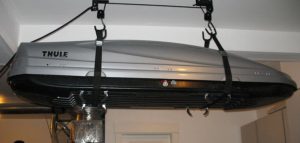 The Thule MultiLift is a pulley system that mounts onto your garage or basement ceiling and stores your box up and out of the way, taking advantage of the little-used upper third of the room space. Strong ropes wrap around your storage box and the pulley system allows you to lift the box up to the ceiling. The lifting is accomplished using a crank system, which users prefer to lifts that require the user to handle the ropes.
The Thule MultiLift is a pulley system that mounts onto your garage or basement ceiling and stores your box up and out of the way, taking advantage of the little-used upper third of the room space. Strong ropes wrap around your storage box and the pulley system allows you to lift the box up to the ceiling. The lifting is accomplished using a crank system, which users prefer to lifts that require the user to handle the ropes.
It’s important to make sure the lift you choose is rated for the weight you want to store. The Thule MultiLift is a high-capacity lift, safely supporting up to 220 pounds. A rubber bumper on the upper end prevents damage from contact with the lifting mechanism. The unit comes preassembled with drill patterns for easy installation. When your MultiLift isn’t storing your Thule box, it can accommodate any number of storage needs, such as canoes, kayaks and surfboards.
Because roof cargo boxes can get pretty dirty when in use, it is recommended you clean the box well each time you remove it from the roof rack and prepare to store it. This prevents storage ropes or straps from scratching the finish and also ensures a clod of dirt won’t fall on your head while you are getting out of your car.
A gentle, soapy solution, free from alcohol, bleach or ammonia, is recommended. It is a good idea to pre-rinse the box and then apply the cleaning solution and wipe the box down with a soft, microfiber cloth. Rinse thoroughly with clean water and dry with a second microfiber cloth. When you go to access your storage box for your next road trip, it will be clean and ready to roll.
So, what’s the best way to store a Thule roof box? It all depends on what your available storage space allows. If space is at a premium at your house, the Thule MultiLift offers a creative solution, without occupying valuable floor space.
Are Thule or Yakima Storage Boxes Better?
If you have embarked on a search for the best rooftop storage for your vehicle, you may know Thule and Yakima lead the market. Thule is a Swedish company, and its products enjoy worldwide acclaim for its innovative engineering and sleek designs. Yakima, a Washington State company, is known primarily for its product efficiency and practicality.
Both Thule and Yakima deserve their stellar reputations and manufacture weather-proof, functional storage boxes that will protect your gear and deliver it to its destination. The two companies are closely matched in ease of installation and attention to safety and security.
Both offer lifetime warranties for their storage boxes, though Yakima’s warranty has some limited features. Some consumers prefer Yakima’s installation mechanism, but Thule’s signature click indicator eliminates the guesswork when tightening the clamps.
Overall, customer reviews suggest that Thule has a slight edge over Yakima, due to its attractive, aerodynamic designs and specialized finishes. These features do come at a price, however, and Yakima wins out for budget-minded consumers. In addition, Thule offers more choices in car storage products and accessories. Ultimately, you can’t go wrong with either manufacturer. If you value style and aesthetics and don’t mind paying a bit more, Thule is a good investment for you.
If you’ve been roadtripping it with your surfboard or your medieval gaming spear protruding into the front seat of your car, it might be time to supplement your vehicle storage with a car roof cargo box.
Not only is overloaded gear and baggage inconvenient for passengers, but it can impede the driver’s views and affect safety. Rooftop cargo boxes are not likely to be one of those toys you’ll buy and never use. Their versatility and functionality have proven their usefulness, season after season.
You can check out some of our favorite Thule roof box and cargo carriers plus accessories here.
